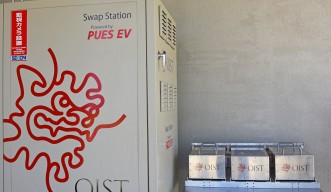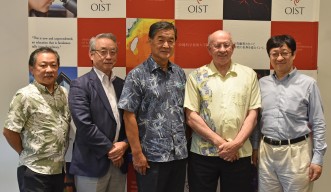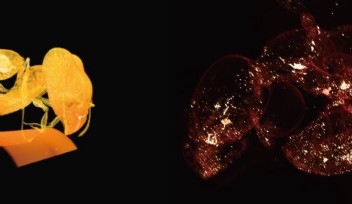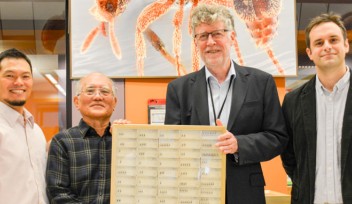New Research Site for Sustainable Living
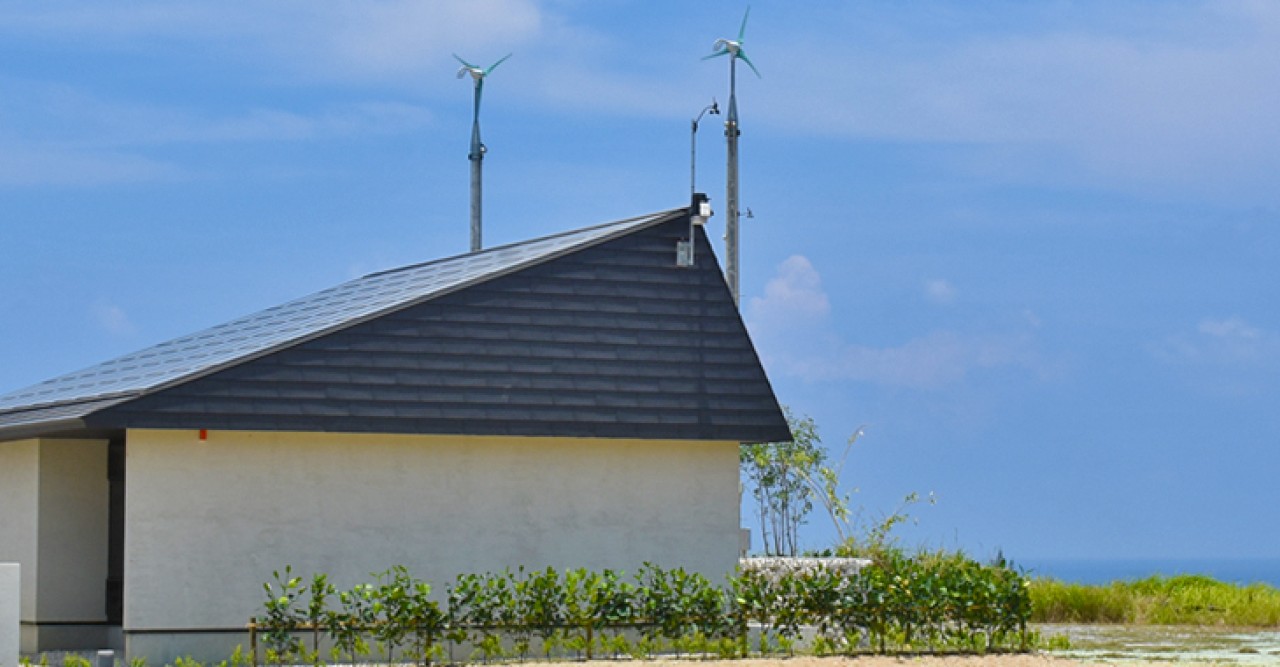
A new R&D site for sustainable living in hot and humid areas was inaugurated on July 28th, 2016. The site is a collaboration between the Okinawa Institute of Science and Technology Graduate University (OIST), Misawa Home Institute of Research and Development Co. Ltd., and PUES Corporation, and it is located on the OIST campus. At the opening ceremony, guests and journalists had the opportunity of exploring the new site and listening to the presentations of the research project for sustainable living and the exchangeable battery system.
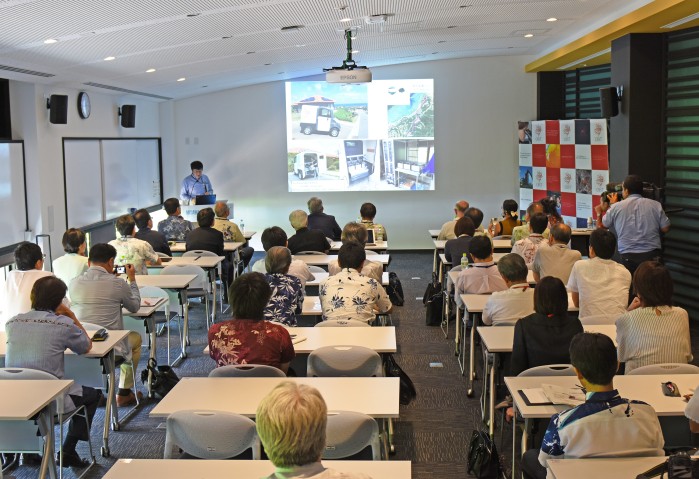
The aim of the research facility is to develop practical solutions that could improve the quality of life in remote areas. Specifically, hot and humid areas in developing countries that lack basic infrastructures, such as electricity. The house for sustainable living is equipped with 88 photovoltaic panels (maximum output of 7kW) on the roof and two outside wind turbines (1kW×2). These devices generate electricity that is stored into a DC battery system, which supplies power to the house air conditioner and appliances. Prof Hiroaki Kitano, from OIST, commented that the aim is to optimize the use of renewable energy in island-based communities.
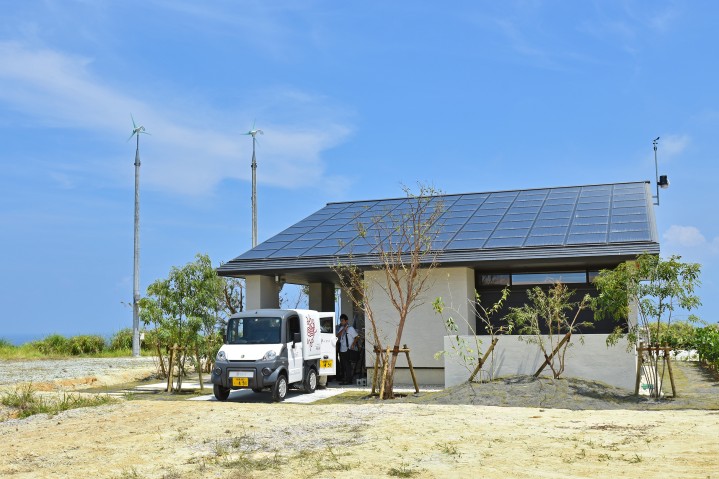
The house is also equipped with Misawa’s Cascade Solar PV system, which dehumidifies during summer utilizing unused energy from the solar panels and cools the house through non-condensation walls. The water is also managed in an innovative way, with a collecting system for rain water and the creation of water through the dehumidifier. “We would like to make this joint research with OIST our stepping stone to accumulate important technology and knowledge,” Haruo Satou, President and CEO of Misawa Homes Institute of Research and Development, said. “Our aim is to build energy-saving houses and towns in hot and humid areas such as in South East Asia, where population increase is expected raising the demand for housing and energy.”
In addition, the house is equipped with the Swap Station: an exchangeable battery system for electric cars – made by a combination of batteries each of 1.5kWh – that utilizes energy from the solar panels and the wind turbines. Characteristic of this system is that the batteries can be charged at the house while the car is used, and then physically swapped with the drained batteries in the car. The batteries can be loaded anytime, saving the charge time. “OIST campus is suitable for developing a battery system, electric vehicles and its management system in hot and humid areas,” Izumi Miyashita, Director of PUES Cooperation, said. “This technology contributes to the improvement of situations in which there is poor power supply or no power supply at all. The system is also effective for securing electricity at times of disaster, such as electric outage due to a typhoon in Okinawa. From this point of view, this technology could also contribute to the improvement of electricity supply condition in Okinawa.”
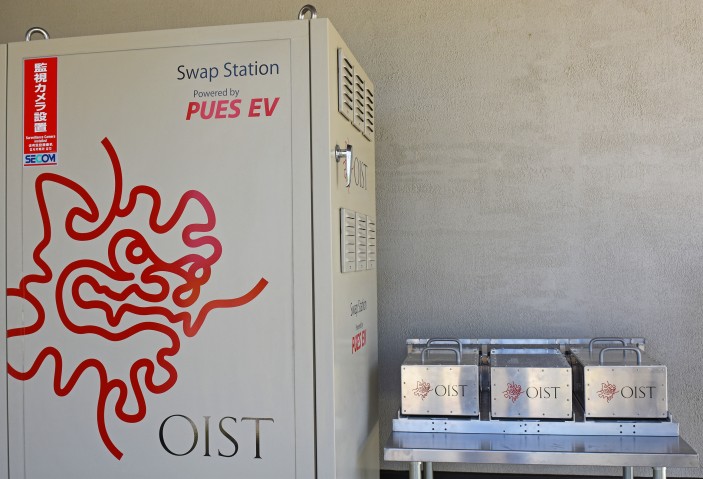
These new technologies have the potential to change the future of the world, as OIST President Jonathan Dorfan commented: “I look forward with excitement to the life-changing impacts that these systems will have in the relatively near future.”
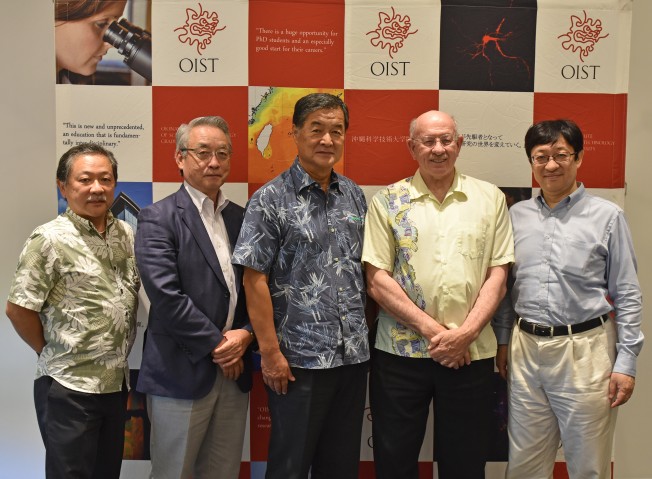
Specialty
Research Unit
For press enquiries:
Press Inquiry Form


